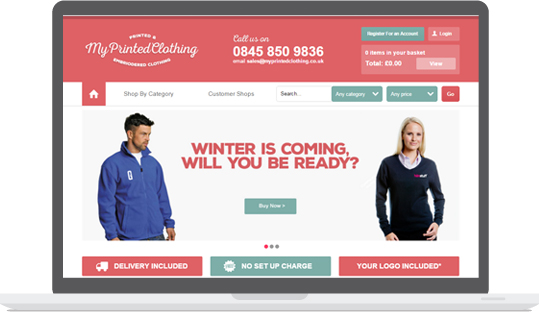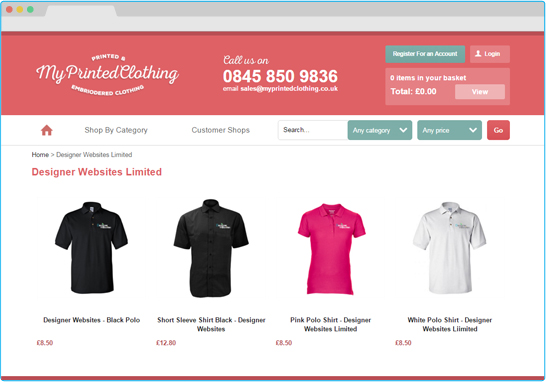It's not!
One of the common misconceptions I come across from garment decorators is that they class a 'website' order as an order if the customer pays for it online. This is perceived as somehow different to somebody who finds you online and picks up the phone or emails, or visits your store to give you an enquiry or place an order.
It's all about choice for customers.
If you've got an 'all singing, all dancing' website where customers are comfortable placing an order for their embroidered or printed clothing online, then great. Lots of them will and you should definitely make that option available to them.
But if they give you an enquiry and you win the order by any other means then put that in your 'website orders' folder as well.
A commercial website (brochure or e-commerce) is a sales tool first and foremost.

Make sure it looks professional, promotes trust and reflects the brand and values of your business, and of course sells something. Your homepage especially needs to do this, but equally important, it must be flexible enough for you to easily update with your latest offers, promotions, best-selling products, content, social media campaigns and so on.
Try looking objectively at your homepage, if you're not happy with it then it's unlikely your potential customers will be. If you want an idea of just how critical this stuff is online, I found this article 'a real eye opener': http://www.entrepreneur.com/article/223150
Focus on marketing, your businesses biggest potential income generator.
When all that hard work and effort you have put in to promoting your new or existing website starts to pay off and the orders, customers emails and phone-calls are coming in, whatever you do, don't send them back to the place they just came from (your website) to try again, 'cause they'll go somewhere else!
Making sure your website gives the best customer experience possible, and when you get to that dream position of how to handle all the orders then look at the rest of the stuff.
When is a Website Not a Website?
If you want a website that books the job in, does the proofing for you, creates the delivery note, sends the invoice, collects the payments and even makes the tea. That's not a 'website'!
There's plenty of software out there that'll handle all that (maybe not the tea) and will serve you well. You can get it built specifically or integrate it with your website. We meet lots of people in our industry who tell us about how much time they spend on this kind of stuff, trying to do it themselves, trying to figure out how these systems work, attempting to upload a zillion products, worrying about whether they need to add more widgets or features to make it better for them.

What about the customer?
Excercise caution if you find something that promises to do it all in one, that's a tall order to be all things to all 'platforms'.
What if you want to change your website?
You shouldn't have to change your order processing system. What if you want to update your brand and improve your marketing or get a swanky new responsive website, you shouldn't have to change your proofing system or accounts package.
Don't get me wrong, it's not that this stuff isn't important, it is! But they are not the same and none of it will win you any business...
One last thought...
Try setting up a new site from a website design company online, fully branded for your business to sell your embroidered or printed clothing. It will cost £10k+ and take months of planning and consideration.
For a sensible solution that helps businesses actually generates income get in touch on info@etraderwebsites.co.uk or call 029 2074 1663.
We will happily chat to you and see if we can possibly help grow your business and its online presence.